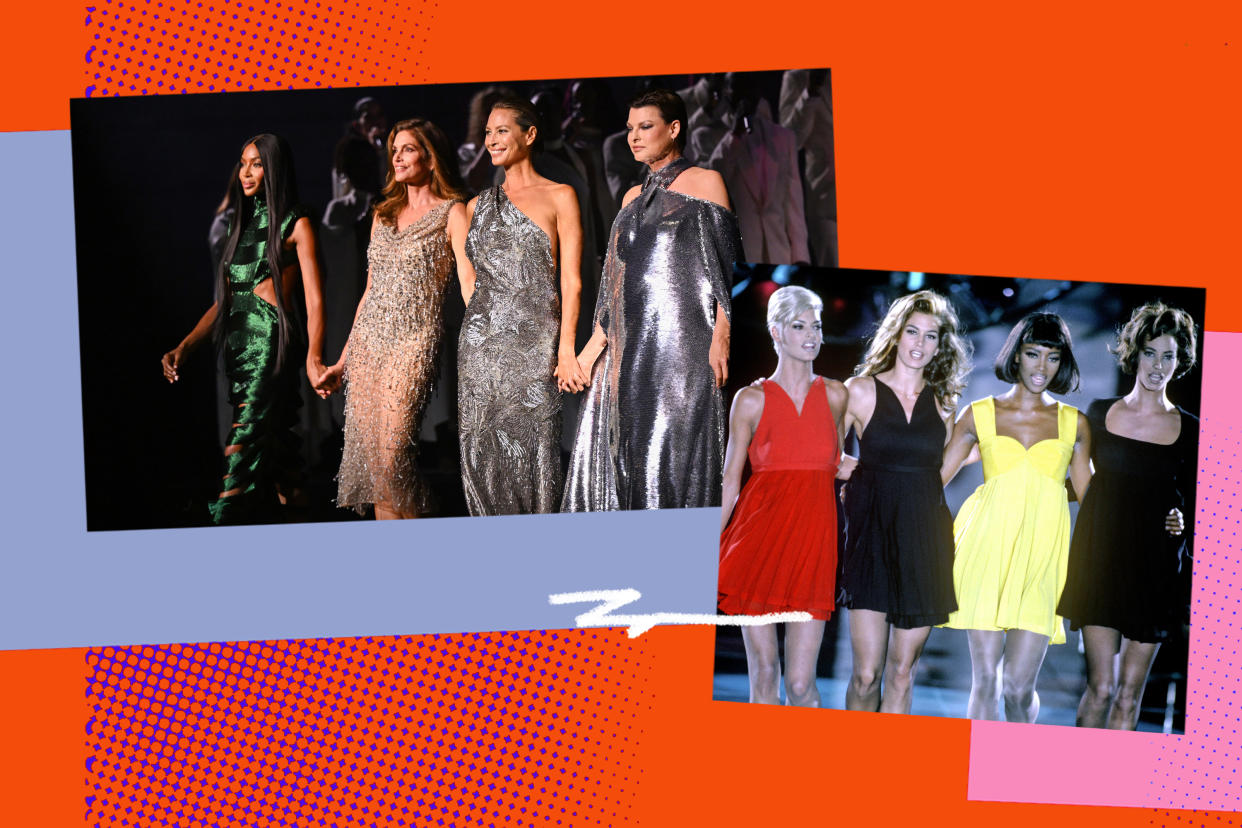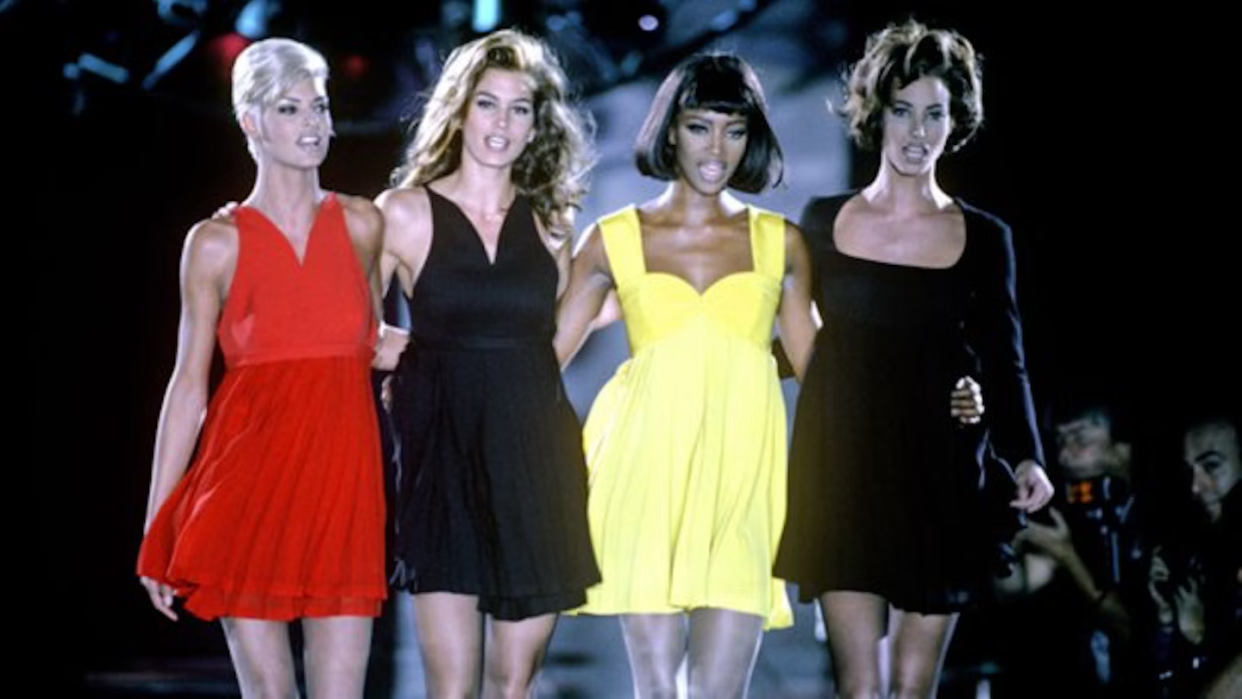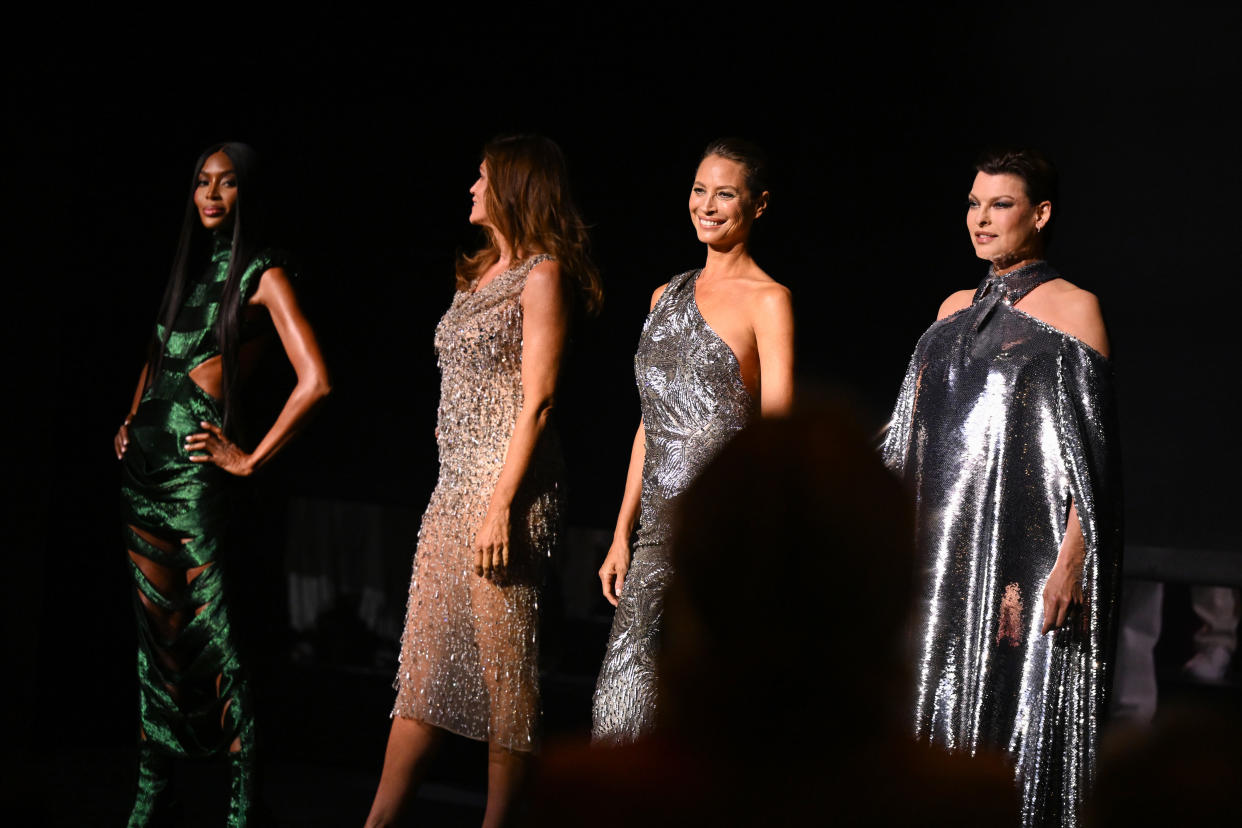How 'The Super Models' reunited Naomi Campbell, Christy Turlington, Linda Evangelista and Cindy Crawford

When thinking of the 1990s, an iconic image often leaps to mind: that of statuesque supermodels like Naomi Campbell, Christy Turlington, Linda Evangelista and Cindy Crawford striding confidently down the runway, embodying not just fashion but an entire cultural movement.
These women, often referred to lovingly as the "Big Four," weren’t just pretty faces. They were muses, revolutionaries and game-changers for women across all industries. Now, they're the focus of a new four-part Apple TV documentary series The Super Models, premiering on Sept. 20.
The Super Models provides a raw, intimate and unfiltered glimpse into the lives of Campbell, 53, Turlington, 54, Evangelista, 58, and Crawford, 57, who revolutionized the modeling industry by helping to shift the industry's aesthetic to be edgier and more inclusive. For them, fashion wasn't just about clothes — it was a political statement.
Bringing their stories to life was no easy feat, directors Roger Ross Williams and Larissa Bills tell Yahoo Entertainment during New York Fashion Week.
“I remember somebody saying to me, I think it was Linda's agent, ‘You have to understand the responsibility here,’” Bills recalls. “And I absolutely do, on every level."
Adds Williams, “We grew up with these women. They were part of our lives, so I feel like we understood the time, we understood the art. It was not lost on us; we were ready.”
‘A cultural milestone’
Not long before Campbell, Turlington, Evangelista and Crawford became household names, Williams and Bills explain, fashion was fixated on models with an all-American look (typically with blond hair and light-colored eyes). But in the '90s, amid broader culture, technological and political shifts — the end of the Cold War, the rise of cable TV and music videos, the AIDS crisis and a growing focus on consumer culture and brand marketing, for example — the "Supers," as they call them, were at the right place at the right time.
“It’s so interesting to see these world events and how they intersect with fashion,” Bills says, stressing the point that fashion is a lighthouse of sorts towards liberation, expression and freedom.

The culture was undergoing major transformation (due in large part to the digital revolution), and designers like Calvin Klein, Gianni Versace, Tom Ford, among others, were taking bigger risks. That included elevating models who may have only been known as “print models,” to be front and center on the runway and other forms of media — such as George Michael’s epic “Freedom '90” video featuring Campbell, Turlington, Evangelista, Crawford and Tatjana Patitz (who died in January, and for whom the directors gave a special mention in the series).
Those risks paid off, executive producer Sara Bernstein tells Yahoo Entertainment, and ultimately led to Versace featuring the Big Four in his now-famous 1991 runway show in Milan, using Michael’s song to lead them down the catwalk. At that moment, it became clear that fashion had officially infiltrated pop culture. And there was no turning back.
“It was a cultural milestone,” says Bernstein. “‘Freedom’ catapulted them to the stratosphere, and they blew up in a way that was defining the culture as we know it.”
The culmination of their growing fame, as well as their early collective work during that time — Turlington as the face of Calvin Klein and Maybelline, Campbell for Yves Saint Laurent and Versace, Evangelista for Chanel and Dolce & Gabbana, Crawford for Revlon and Pepsi — made them not just models, but supermodels. And whether they realized it or not, they ultimately shaped a landscape that would come to define influencer culture.
'The power of sisterhood'
Beyond their beauty and stage presence, Bills and Williams say the Big Four didn’t achieve success by themselves. Rather, it was a culmination of intimate partnerships with designers and photographers alike, all of whom were disrupting the fashion world in one way or another (Steven Meisel, Richard Avedon and Azzedine Alaïa, among others).
Even more prominent is the fact that the women helped each other climb the ladder of success, such as when Turlington, Crawford and Evangelista refused to model for designers at the time who deliberately left out Campbell because she was Black.
“Naomi was being championed by her peers,” Bills points out. “Looking back through today's lens, it’s difficult to understand what other girls, who were working at 14, 15 — I mean, they were children — were going through in a very unregulated industry at the time.”
Bills made sure "the power of sisterhood" was prevalent throughout the series. And while other “Supers” aren’t showcased in full — Claudia Schiffer, Kate Moss, Helena Christensen, Tyra Banks, Elle Macpherson, and more — she and Rogers say the Big Four, through historic collaborations and iconic imagery as a collective, unlike others, are the epitome of women empowerment. That's a vital message in the series.
“There were supermodels before, but they were all their individual selves,” Rogers explains. “When these four women came together, they merged with pop culture and music in a way that was unheard of, and will never been seen again.”
Models like Moss, he points out, came later in the '90s. “These four are the originals," he says plainly, and telling their story was paramount in depicting the "larger picture" of how today's models fit into a digital- and commerce-led mold these ladies helped to define.
The future of fashion — and how the Big Four changed it
There are certainly scenes that are difficult to watch for fans — including an emotional moment where Evangelista breaks down when discussing her recently botched CoolSculpting procedure that left her permanently disfigured.
“What happened to my body after CoolSculpting became a nightmare,” she says in the series. “Had someone told me, ‘You’re going to grow fat, and hard fat, that we can’t remove,’ maybe I would never have taken the risk.”
Other moments showcase how the Big Four dismantled unhealthy views towards aging and body image, using their own stories as a vessel. One cringe-worthy clip from an episode of The Oprah Winfrey Show in the '90s shows Winfrey asking Crawford to stand and show off her body to a 'wooing' audience. Other moments chronicled the various ways they were forced to chop off their hair without their consent, driving the point that even in their heyday they didn’t have ownership over their bodies. (Crawford’s Oct. 1998 Playboy cover, she says in the film, was her way of reclaiming that agency.)

Highlighting just how far the modeling world has come in that regard, the filmmakers hope, should act as a “lesson” for younger generations to learn from.
“We're so conditioned to think, 'Well, they're the ideals of beauty and they make women feel badly,'” says Bernstein. “But as you experience their journeys and their stories, you understand how they're actually feminist in their own ways. There is a lot of power in who they have all evolved into and what they’ve done with this ideal of beauty, that it permeates from the inside out.”
“They’ve shown that beauty and feminism, or beauty and power are not mutually exclusive,” Bills adds. “I don't want to say they're responsible for the whole influencer culture, but they certainly have a part in it. Their faces became the faces of brands. Now, to have someone affiliated that closely with a brand, that’s what everybody wants.”
"What’s wonderful about people like Naomi is that she's using her power to lift up young African designers who would have never gotten a break otherwise," says Rogers, who is also quick to note that today’s fashion influencers lack the grit models in the '90s had.
“It feels diluted,” he says of the fashion landscape now. “Everyone's an influencer and they're just sitting there in front of their ring light. There’s no art in it anymore. There’s no storytelling.”
To that end, Rogers wants the story of the Big Four to be a “learning tool” for pop culture aficionados to grow from. Perhaps then, he says, it might help others understand the power of community and that "no one can succeed on their own."
“Maybe it’ll inspire young influencers," he says. "Or, maybe it’ll inspire them to go a little further artistically or to express themselves in a different way other than comments on TikTok.”
